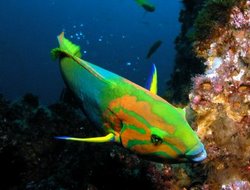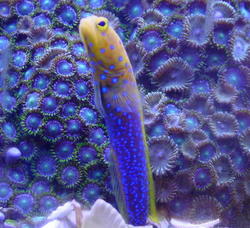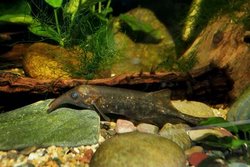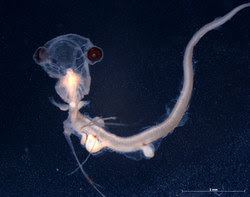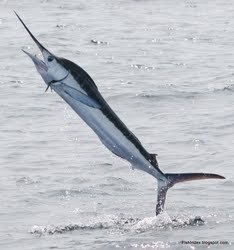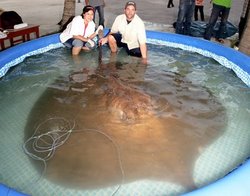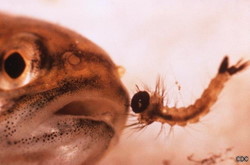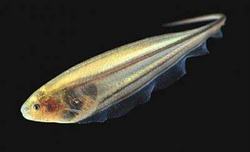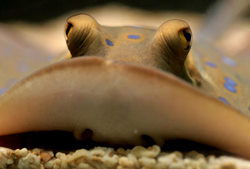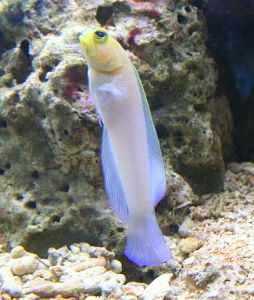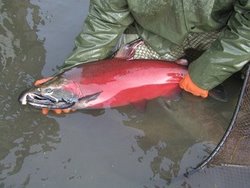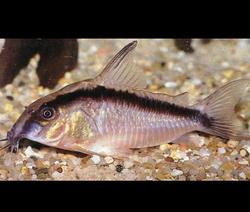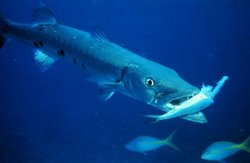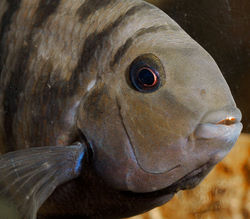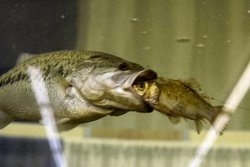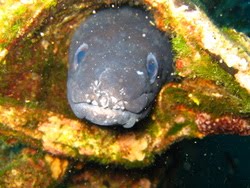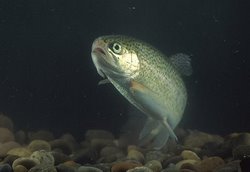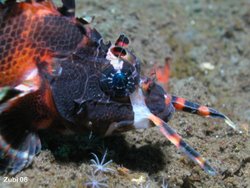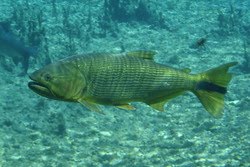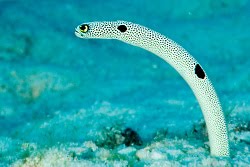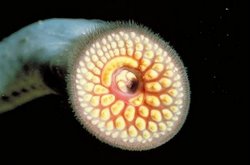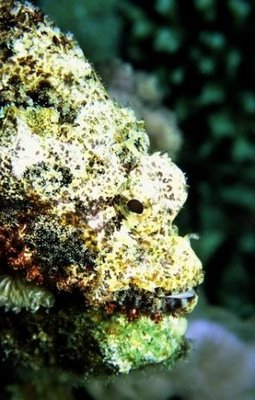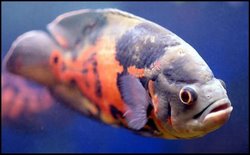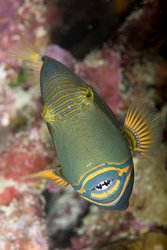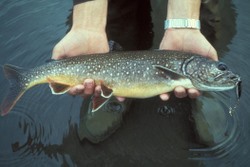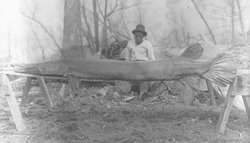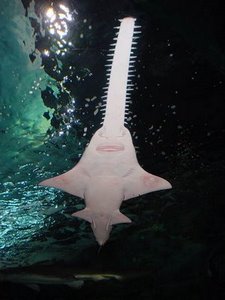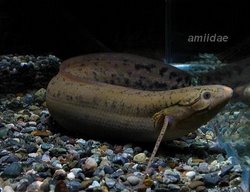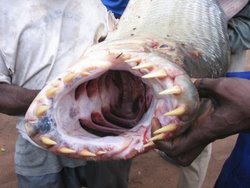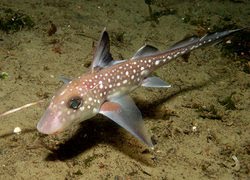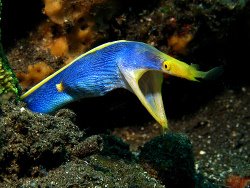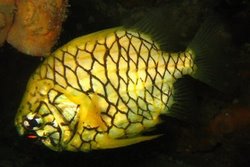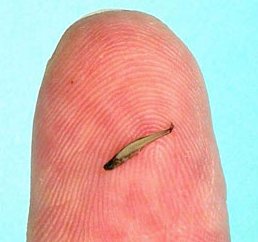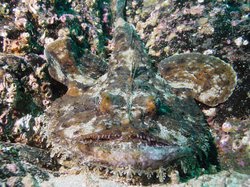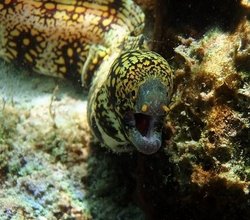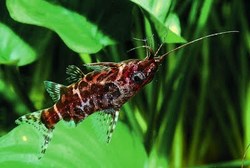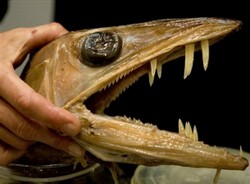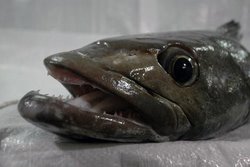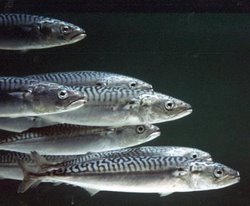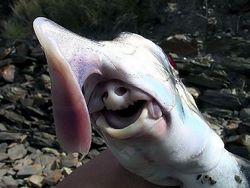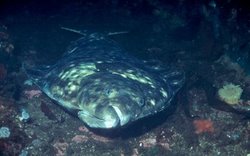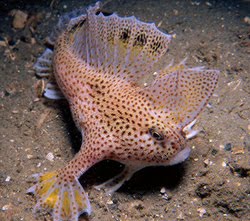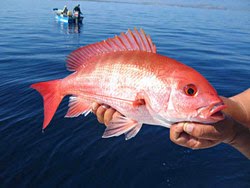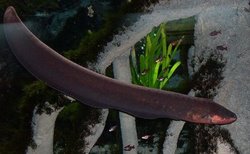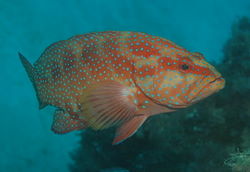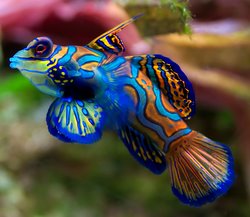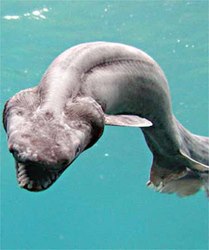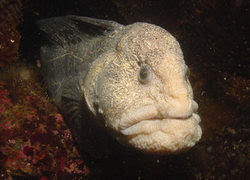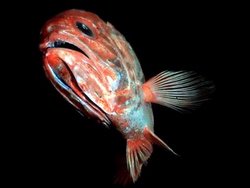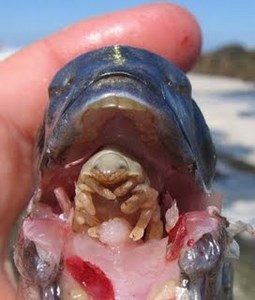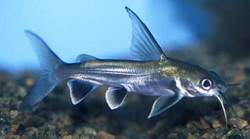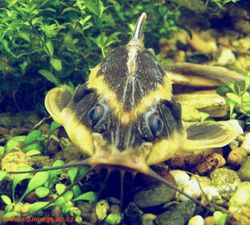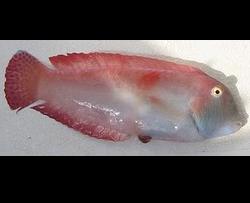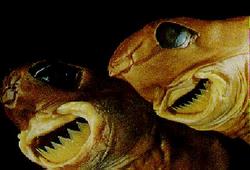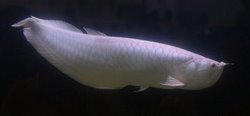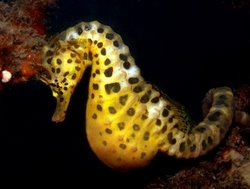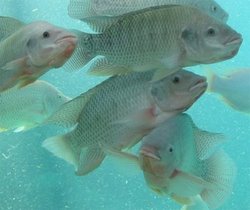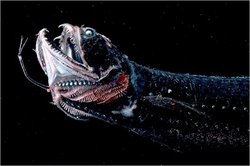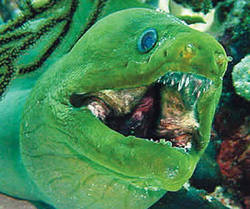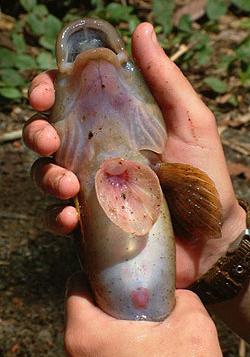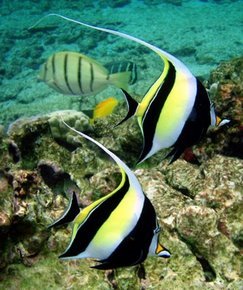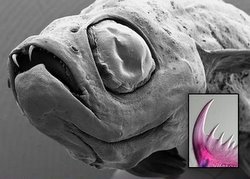 The Horn Shark or Heterodontus francisci is a nocturnal type of bull shark. This shark reaches lengths of about 4' and can weigh in at as much as 22lbs. The Horn Shark has sort of a camouflage coloration of black and brown spots all around its body.
The Horn Shark or Heterodontus francisci is a nocturnal type of bull shark. This shark reaches lengths of about 4' and can weigh in at as much as 22lbs. The Horn Shark has sort of a camouflage coloration of black and brown spots all around its body.  Normally found from central California to the Gulf of California, Mexico this fish is not considered to be dangerous, but will bite if harassed. They also have a very unquie defense mechanism, two sharp horns on their backs that make it tougher for a fish to swallow it. Check out an Angel Shark trying to swallow a Horn Shark in the video below.
Normally found from central California to the Gulf of California, Mexico this fish is not considered to be dangerous, but will bite if harassed. They also have a very unquie defense mechanism, two sharp horns on their backs that make it tougher for a fish to swallow it. Check out an Angel Shark trying to swallow a Horn Shark in the video below.The Horn shark is nocturnal and very inactive during the day.
 They don't spend a lot of time swimming, in fact they are quite lazy spending most of their time laying on rocks. These sharks feed on small fish that make the mistake of getting too close to these creature. They also feed on mollusks, sea urchins, and crustaceans. To check out this lazy shark in action have a look at the video below which shows a baby Horn Shark...
They don't spend a lot of time swimming, in fact they are quite lazy spending most of their time laying on rocks. These sharks feed on small fish that make the mistake of getting too close to these creature. They also feed on mollusks, sea urchins, and crustaceans. To check out this lazy shark in action have a look at the video below which shows a baby Horn Shark...




